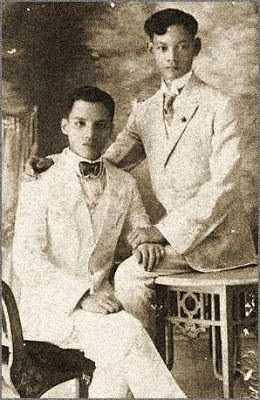There are a number of uprisings and revolt throughout the centuries of Spanish colonial period over abuse, excessive taxation on local products, corrupt and ill system of government among others. There are also some rebellion which was ignited by people's faith and beliefs. One such religious revolt took place in Panay caused by convergence of faith. This religious revolt is led by a certain Tapar from Iloilo in 1663.
Tapar or Tapara is a native babaylan from the town of Oton in Iloilo province in the island of Panay who was a new convert of Catholicism. He was known for founding a religious cult that merged Catholic religious practices with traditional rituals a modified form of Christianity. He persuaded the locals to join his group and attracted many followers with his stories about his frequent conversation with a demon. He proclaimed himself "God Almighty" and went around garbed in a woman's dress. According to Fray Juan Fernandez, who chronicled important events in some Iloilo pueblos, described Tapara as a mystic who dressed and acted like a female.
Tapar taught taught his followers to worship idols, performed prodigies resembling miracles, and became a prophet. He promised the natives:
a. a life of abundance (weaves fish, coconut fiber into linen)
b. that they won't be hit/won't die when hit by Spanish muskets; those who will die in the rebellion will live again.
Tapar known as the "Eternal Father," assigned among his followers a Son, a Holy Ghost, a Virgin Mary, twelve apostles, a Pope, and several bishops. It was at this time when the people felt estranged from the Spanish friars because of their prevalent misdemeanor and misdeeds.
Tapar's syncretic religion appropriated Catholic terminologies and ignored the Spanish priests because Tapar believed that they had their own "popes", "bishops", and "priests", as well as "Jesus Christ", "Holy Ghost" and "Trinity" who could minister to them in their own nativistic ways.
The growing religious following of Tapar reached the then Spanish parish priest curate (friar) assigned to the town of Ogtong (Oton town today), Fr. Francisco de Mesa and he criticized their unorthodox practices. The followers of Tapar were agitated and they executed the parish priest for condemning their religious movement. Tapar's group burned the church and the priest's house, and fled to the mountains.
The Spanish authority knew about the incident and they launched an attack to quell the emergence of the new religion. Spanish troops were sent to Oton and by employing hired spies, the Spaniards caught up with the principal leaders who, in the process of fighting back, were killed. Their corpses were carried back to the port of Iloilo, then fastened to bamboo poles in the Halawod (Jalaur) River to be fed on by crocodiles. The woman who was named as the group's "Blessed Virgin Mary" (Maria Santisima) was mercilessly impaled on a bamboo stake and placed strategically at the mouth of the Laglag (now Dueñas) river to be eaten also by crocodiles. By 1664, as claimed by the Spaniards, peace had returned to Oton. (Agoncillo 1979, Zaide 1957).
Sources:
Tapar Of Panay Facebook Page - https://www.facebook.com/taparofpanay/posts/tapar-revolt-1663personal-informationname-tapar-of-panaynationality-babaylan-nat/989151497772042/
Tapar Revolt Wiki Pilipinas - https://en.wikipilipinas.org/view/Tapar_Revolt_(1663)
10 Amazing Pinoy LGBTS Who Broke Barriers And Made History, Filipiknow - https://filipiknow.net/lgbt-personalities-philippine-history/
The Tapar Uprising In Oton Iloilo, Bridging The Gap By Henry F. Funtecha The News Today Online Edition - http://www.thenewstoday.info/2007/02/09/the.tapar.uprising.in.oton.iloilo.html
































